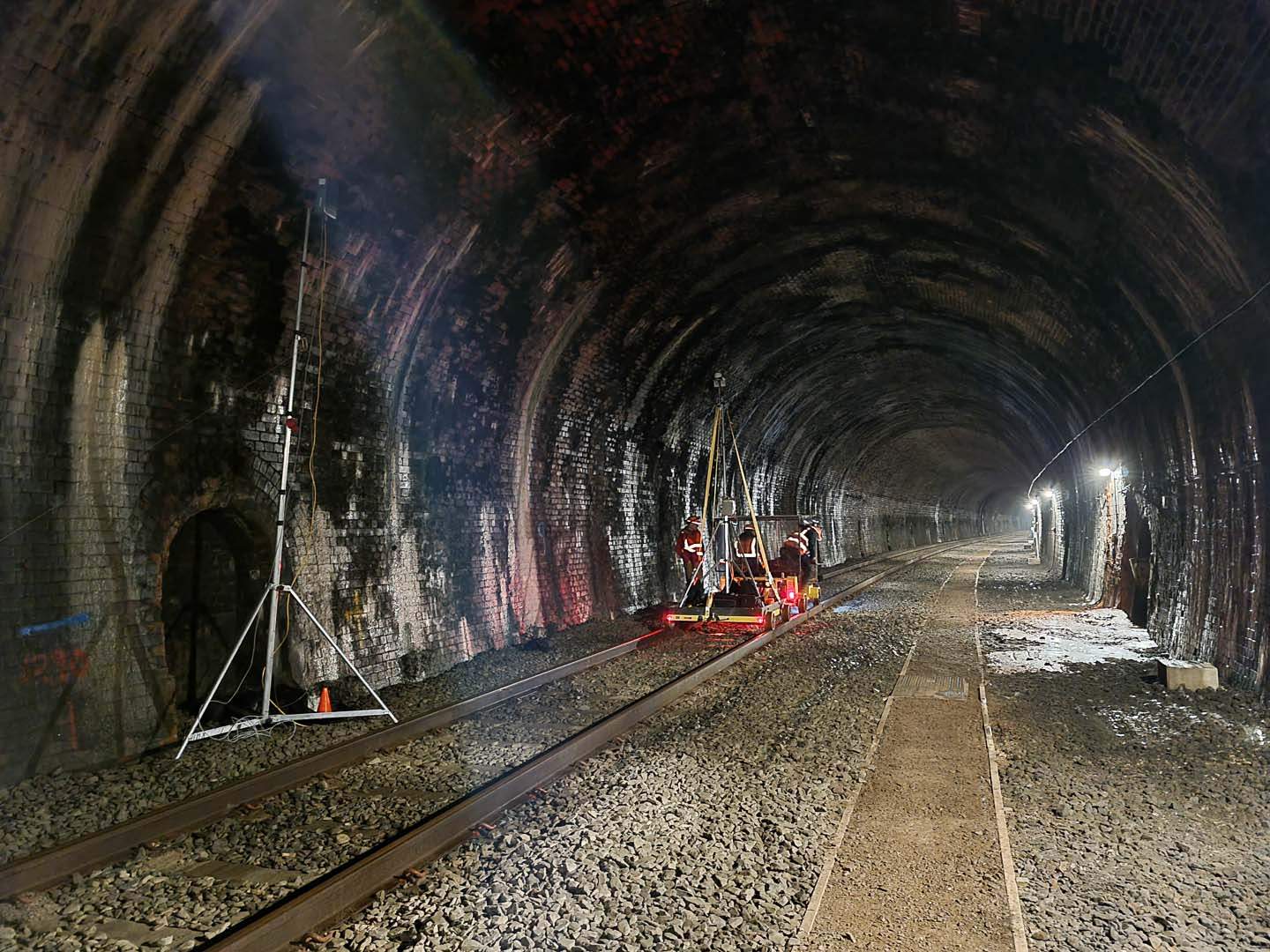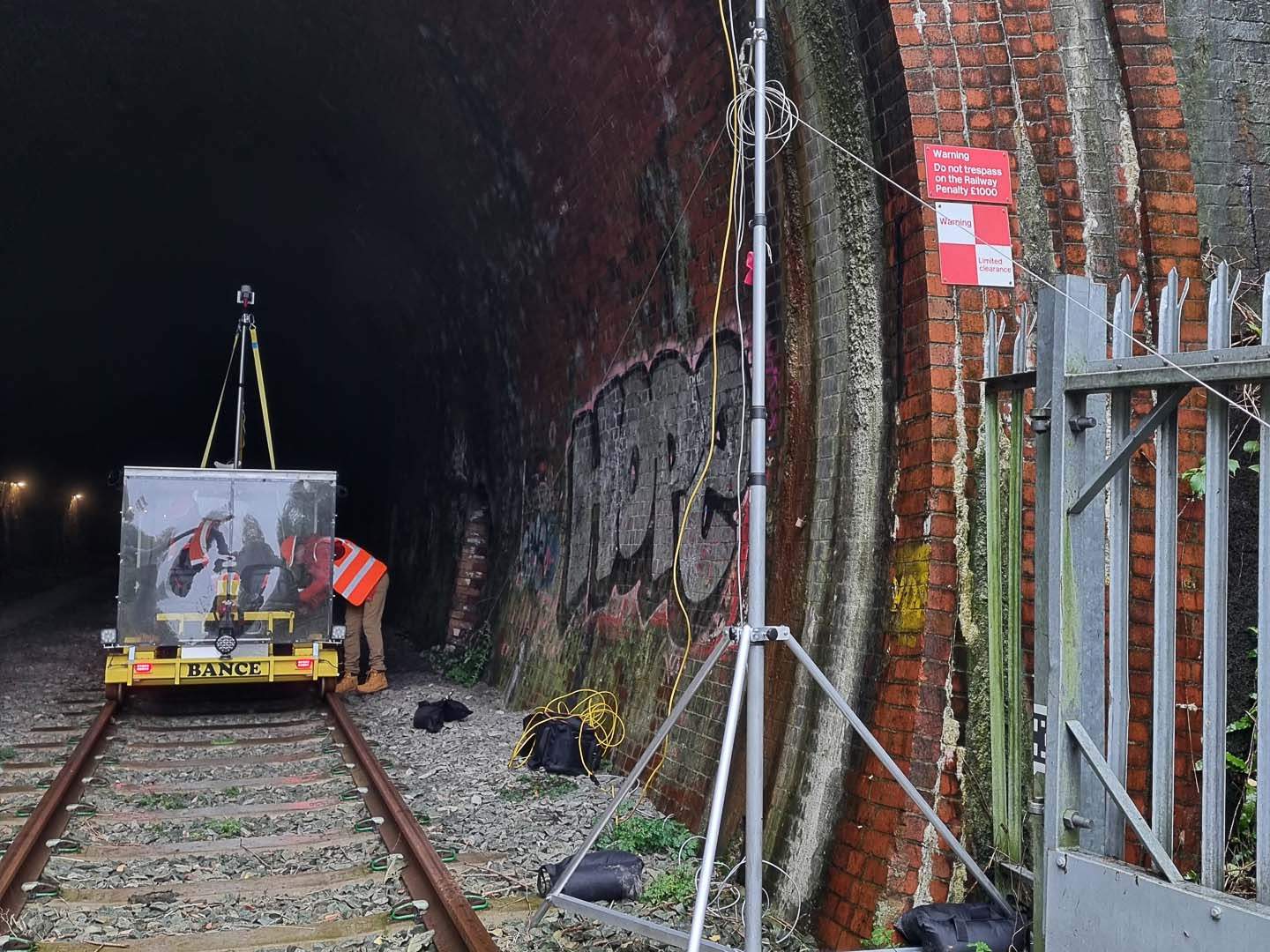Blu Wireless Technology Ltd, a Bristol-based company specialising in the development of high-performance wireless communication solutions, spent time at the Very Light Rail National Innovation Centre (VLRNIC) earlier this month testing their LightningBlu technology in the tunnel.

Blu Wireless (BWT) is an industry leader in the development and deployment of millimetre wave or mmWave frequency band technology, operating in the license exempt 57-71 GHz spectrum. Their solution has already been proven and implemented across other sectors, such as high-speed automotive, notably with McLaren for Motorsport communications, and within a range of defence systems, where it offers ten times the data rate of Wi-Fi and 5G. Moreover, the ‘LightningBlu’ solution has been deployed on the Caltrain commuter line through California’s Silicon Valley in the US where the installation has been aligned with a new generation of electric commuter trains and soon to be live on the First Group South Western Railways network in the UK.
THE CHALLENGE
In the UK, the demand for ultra-fast connectivity from business commuters is clearly defined, and whilst LightningBlu is a solution, the complexity of the railway landscape, which impacts significantly on integrity and continuity, requires testing and proving as per real-world deployment within a range of locations. Although initial testing was undertaken by the company within a rail tunnel at another site, it did not yield enough scientific-quality data for meaningful modelling which could be used to develop a robust predictive model for wider deployment within the rail industry.

OBJECTIVES
The objective of the testing was to validate effective and stable connectivity where rail lines run underground, either exclusively, such as the majority of the London Underground system, or intermittently, i.e., where lines pass through a tunnel. As such, the focus of the on-site testing at BCIMO was to formally scrutinise the technology’s propagation in an environment which is not only representative of a real-world situation, but which also has additional features indicative of infrastructure scope.

INPUTS
The brick Tunnel on the site’s Rail Test Track in Dudley was built in 1850 as part of the original Oxford-Worcester-Wolverhampton Line; it is 870m long with a right-hand curve mid-way from the north end and has a standard gauge track throughout. Construction materials and landscape above mean that it is indicative of many such tunnels and also comparable to other materials such as concrete at extremely high frequency, whilst its length yields more favourable data than testing within a shorter tunnel. However, the curve is a key factor, including within the company’s decision to test in Dudley, as this eliminates direct line of sight, and thus the ability of signals to pass through the tunnel unimpeded, as would be the case in a straight construction.
In addition, the presence of an existing track means that equipment can be attached to a vehicle, such as the Centre’s electric Alumicart and Trailer, and testing can take place along the entire length of the tunnel on a moving vehicle, thus indicative of the in-service movement of a train.

ACTIVITIES
For the test, Blu Wireless’ engineering team installed trackside units at various locations throughout the tunnel and in-train units on the vehicle at the relevant operational height, running multiple measurements throughout the two-day period, collecting data and making adjustments to each test run where necessary.



OUTPUTS
Prior to testing, theoretical predictions made suggested that reflection would propagate around the curve but, surprisingly, their actual results were positive end-to-end throughout the length of the tunnel without this. In practice, it means that the number of trackside units required for installation within such an environment can be reduced, so reducing time and cost required for trackside installation by train operators thus improving the commercial proposition for the company. This, in addition to existing evidence, for example within the Caltrain project, that LightningBlu can significantly outperform alternative products based on wireless technology working at lower frequencies, positions it strongly against competitors, including on the global innovation stage, where many are several years behind Blu Wireless in bringing comparable rail qualified ‘Gigabit train’ solutions to market.

OUTCOMES
In the medium to longer-term, Blu Wireless is already in discussions with regard to other projects in the US, and further in the UK, EU, Middle East and Far East, thus aiming for substantial scale up of its production and service capability over the next three to five years. With governmental strategies in place to increase the development and utilisation of interconnected sustainable public transport and increased passenger demand, not just for affordable, reliable and notably fast train journeys but for a range of high-quality facilities within the scope of those journeys – including workplace-comparable connectivity – the demand for technology will increase, and particularly so with the outstanding capability offered by the company.

Mark Barrett, Chief Strategy Officer for Blu Wireless, commented:
“We were looking for a representative rail tunnel with the ability to perform controlled measurements in a scientifically controlled environment – with the aim of validating the performance of our ‘LightningBlu’ mmWave gigabit connectivity solution.
We were very pleased with the facilities and support provided by the BCIMO team from which we generated a comprehensive set of measurement data to build a scalable propagation model. Moreover, we very pleased to see that propagation within the tunnel showed that mmWave radio reflections within the tunnel aids propagation around curves and provides ‘Beyond Line of Sight’ coverage in such rail deployments.”
For more information on BCIMO or the VLRNIC, please visit the BCIMO website or click Contact Us to make an enquiry / sign up to our mailing list.

BCIMO is a not-for-profit Research and Technology Organisation (RTO) and operator of the Very Light Rail National Innovation Centre (VLRNIC), a unique, world-class centre for rail innovation based in Dudley in the West Midlands.

Google Map Location: BCIMO
what3words Address: ///shades.glue.tile
Sat Nav: DY1 4AL
Postal Address: BCIMO, Very Light Rail National Innovation Centre, Zoological Drive, Dudley. DY1 4AW
Email: info@bcimo.co.uk
Phone: 07769 586893

